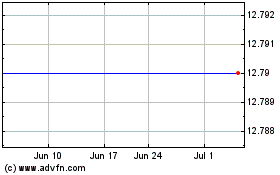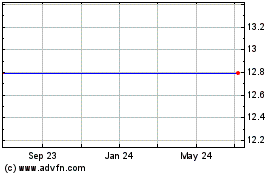New York Community Leaves Familiar Turf With Amtrust Bank Buy
December 07 2009 - 3:39PM
Dow Jones News
With the acquisition of AmTrust Bank, New York Community Bancorp
(NYB) is, for the first time, venturing out of its home market.
Such expansions have been proven risky to other banks. But New
York Community Chairman and Chief Executive Joseph Ficalora said
his deal to buy AmTrust Bank from the Federal Deposit Insurance
Corp. will give him new funding to pursue his bank's current
strategy.
AmTrust, of Ohio, failed Friday. It has $11 billion in deposits
and branches in Florida and Arizona in addition to its northeast
Ohio home. New York Community is only in metropolitan New York, and
has $14.5 billion of deposits. It will not buy all AmTrust's assets
and gets guarantees from the FDIC for those it takes.
New York Community will take AmTrust's deposits and invest them
into the bank's single niche business: Loans to owners of New York
apartment houses that fall under the city's rent regulations.
The bank said Monday it would issue 60 million shares to expand
AmTrust and beef up its common equity capital. Shares of New York
Community rallied as much as 11% in a mixed market for bank stocks
Monday; most recently, the stock rose 6.7%, to $13.15. FBR Capital
Markets analyst Bob Ramsey upgraded it to outperform from market
perform because of the AmTrust deal.
New York Community's strategy has simply been to buy banks with
attractive deposits but little means to deploy them. To fund its
multi-family loans, New York Community acquired nine banks in as
many years; it stripped them of the securities and loans they held
on their balance sheets. New York Community doesn't use its
branches to expand its loan book. Any consumer loans, such as
mortgages, that are made in the branches are sold to other banks or
outside investors.
In Florida, Arizona, and Ohio, New York Community will do the
same. "This transaction is the best example of our intent to grow
our best-in-class loan book with highly efficient deposit funding,"
Ficalora told investors during a conference call. He wants more
such deals to follow, particularly in New York Community's new
markets.
Yet, in buying AmTrust, New York Community is entering markets
shaken by the mortgage meltdown. "There are no synergies between
the AmTrust operations and NYB's core [multi-family] niche," BMO
Capital Markets analyst Peter Winter wrote in a research note.
AmTrust's deposits carry high interest rates and might run off, he
noted. He does expect "the overall deal to be accretive to
earnings."
New York Community calculates that about 15% of AmTrust's high
interest deposits could run off, but Ficalora said that his bank's
ownership of the struggling bank will now allow it to regain
deposits.
There is little danger that New York Community will run out of
demand for the multi-family loans in New York it likes to make. "We
have about 15% of the niche that we in fact like," Ficalora said.
"So we can easily grow this bank on the asset side to two or three
or four times." His bank competes with Capital One Financial Corp.
(COF), J.P. Morgan Chase & Co. (JPM), and Citigroup Inc. (C)
for multi-family loans.
Rent regulated apartment buildings increase their cash flow--and
therefore their value--constantly, because more and more tenants
move out of rent controlled and rent stabilized apartments,
allowing higher market rents. That pattern has reduced New York
Community's lending risk and allows the apartment owners to
refinance frequently, at a fee to the bank.
Ficalora has often said that his strategy can only take his bank
so far, but during the financial crisis, New York Community has
continued to generate profits because it had few delinquent loans.
The bank's third quarter profit rose 70%, to almost $100
million.
-By Matthias Rieker, Dow Jones Newswires; 212-416-2471;
matthias.rieker@dowjones.com
New York Community Bancorp, Inc. (NYSE:NYB)
Historical Stock Chart
From Mar 2024 to Apr 2024

New York Community Bancorp, Inc. (NYSE:NYB)
Historical Stock Chart
From Apr 2023 to Apr 2024
